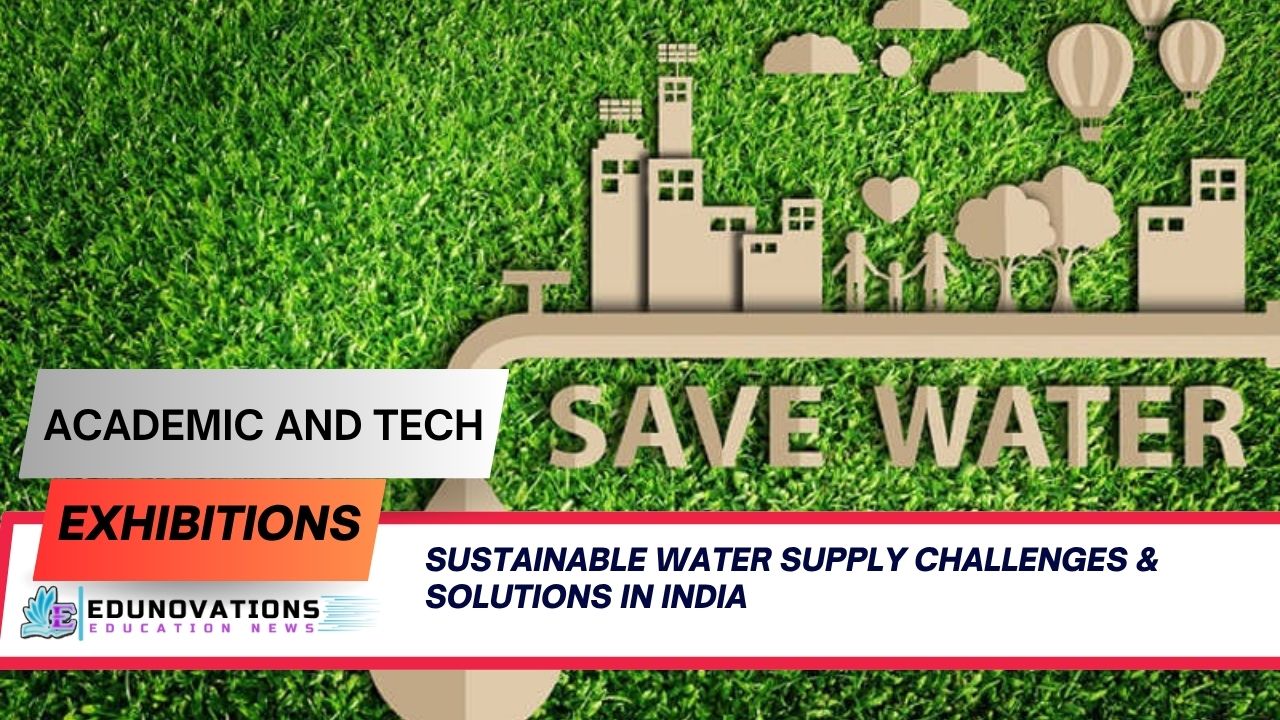Explore sustainable water supply challenges and practical solutions to India’s growing water crisis. Learn how rural & urban infrastructure reforms are shaping the future.
Introduction
Access to clean, consistent water is a basic human right, yet sustainable water supply challenges continue to threaten this fundamental need across India. From megacities like Bengaluru to remote villages in Rajasthan, the crisis is escalating—driven by both natural factors and human mismanagement. In many areas, dried-up borewells, leaky pipelines, and untreated sewage infiltration have become alarmingly common, reflecting a fragmented and unsustainable water distribution system.
Climate change has only intensified these sustainable water supply challenges, creating erratic monsoon patterns, prolonged droughts, and flash floods that strain already overburdened infrastructure. With urban populations rapidly expanding and rural areas struggling to modernize their systems, India now finds itself at a critical juncture.
Recognizing the urgency, the Indian Institute of Management Bangalore (IIMB) has brought together researchers, government leaders, and community stakeholders to address the crisis through evidence-based discussions. Their academic forums emphasize data-backed policies, scalable institutional models, and collaborative governance to resolve these growing sustainable water supply challenges.
Understanding the Sustainable Water Supply Challenges in India
India’s water supply infrastructure—both urban and rural—is caught in a complex web of environmental, technical, and governance failures. These sustainable water supply challenges are not isolated issues; they are systemic and deeply interconnected.
Urban Water Crisis
In cities, unplanned expansion and outdated infrastructure have created a host of issues:
- Overreliance on groundwater has led to dangerous depletion levels, particularly in states like Punjab and Tamil Nadu.
- Aging pipelines result in up to 40% of water loss due to leakage before reaching end-users.
- Inadequate metering systems hinder accurate billing, reducing consumer accountability and revenue recovery.
- Urban sprawl without matching infrastructure upgrades creates large supply-demand mismatches, leaving many communities underserved.
Rural Water Supply Challenges
Rural India, while covered under national schemes like the Jal Jeevan Mission, faces its own set of hurdles:
- Seasonal scarcity of surface water, especially during pre-monsoon months, leaves many villages dependent on tanker supplies.
- Poor maintenance of decentralized systems, such as borewells and hand pumps, leads to frequent breakdowns and water outages.
- Insufficient training of local water managers means that installed systems are often underutilized or mismanaged.
- Implementation gaps in Jal Jeevan Mission water supply plans, including delays in tendering and monitoring, reduce long-term sustainability.
Together, these urban and rural failures illustrate the magnitude of India’s sustainable water supply challenges—issues that demand urgent, innovative, and inclusive solutions.
The Jal Jeevan Mission: A National Push Toward Sustainability
Launched in 2019, the Jal Jeevan Mission is a flagship initiative by the Government of India aimed at providing functional household tap connections to every rural household by 2024. While its ambition is commendable, field execution has faced hurdles:
- Poor water quality monitoring
- Delays in tendering and supply chain logistics
- Inadequate technical expertise in local bodies
However, experts from institutions like IIM Bangalore suggest that aligning community-led sustainable water projects with existing government schemes could solve many of these bottlenecks.
Expert Insight
Dr. Veena Srinivasan, a leading water expert from ATREE and an alumnus of Stanford University, noted:
“We must rethink water governance in India. The answer lies not just in more infrastructure but in smarter, community-driven solutions.”
Her comments reflect the growing consensus among experts that innovative solutions for sustainable water supply need to be rooted in local ecosystems.
Innovative Solutions to Overcome Water Supply Challenges
To bridge the gap between policy and execution, several practical strategies are being implemented across India.
1. Smart Metering and Leak Detection
- Helps identify water loss points
- Encourages responsible usage through real-time monitoring
2. Rainwater Harvesting Integration
- Especially effective in urban apartments and schools
- Reduces groundwater dependence
3. Community Ownership Models
- Women-led water committees managing operations
- Successful in parts of Rajasthan and Maharashtra
4. Private Partnerships
- Collaborations with companies for water tech solutions
- Mart India Infotech, for instance, helps design smart school websites and water awareness tools (Visit Mart India Infotech)
5. GIS and IoT Integration
- Geo-tagged pipelines for monitoring
- Internet of Things (IoT) for remote diagnostics
Best Practices from the Ground
Rajasthan Rural Water Infrastructure Model
- Decentralized treatment and supply units
- Managed by Panchayats and trained youth
Bengaluru Water Sustainability Efforts
- Treated wastewater reused for gardening and construction
- Digitized billing and metering systems improving collection
Toppers Use Mind Maps to score more than 95%
NCERT Class 11th Commerce Mind Maps
Add to cartOriginal price was: ₹999.00.₹199.00Current price is: ₹199.00.NCERT Class 12th Chemistry Mind Maps
Add to cartOriginal price was: ₹199.00.₹75.00Current price is: ₹75.00.NCERT Class 12th Commerce Mind Maps
Add to cartOriginal price was: ₹999.00.₹199.00Current price is: ₹199.00.NCERT Class 12th Science Mind Maps
Add to cartOriginal price was: ₹999.00.₹199.00Current price is: ₹199.00.NCERT Mind Maps For Class 10th
Add to cartOriginal price was: ₹999.00.₹199.00Current price is: ₹199.00.
Purchase Today
How Local Governments Can Contribute
- Training Programs: Build capacity in local panchayats
- Transparent Governance: Enable citizen grievance portals
- Public Awareness: Use school curriculums to drive water education (For syllabus and NCERT support, visit Edunovations Syllabus and NCERT Courses)
Resources to Learn and Engage
Want to explore more on this topic?
- 📘 NCERT Notes
- 📺 Educational Videos
- 📄 Free NCERT PDFs
- 🧠 Mind Maps for Quick Learning
- 📰 Current Affairs for Exams
- ❓ Topic-Wise MCQs
The Road Ahead: Empowering the Next Generation
India must move from reactive water management to a proactive, data-driven and community-based approach. With a population of over 1.4 billion and growing, the stakes could not be higher.
Whether it’s optimizing pipelines in cities or building borewells in villages, the solutions to sustainable water supply challenges lie in integration, innovation, and inclusivity.
FAQs on Sustainable Water Supply Challenges
- What are the major sustainable water supply challenges in India?
India faces challenges like groundwater depletion, pipeline leaks, poor governance, and low awareness among users. - How does the Jal Jeevan Mission address water supply issues?
It aims to provide tap connections to all rural households by improving infrastructure and promoting sustainability. - What are some innovative solutions for sustainable water supply?
Smart metering, rainwater harvesting, GIS-based monitoring, and community management are key innovations. - Why is sustainable urban water management crucial today?
Urban sprawl has overwhelmed existing systems, making smart and eco-conscious water planning essential. - How can communities contribute to water sustainability?
By forming user groups, maintaining local water infrastructure, and adopting rainwater harvesting. - What role do smart technologies play in solving these challenges?
Technologies like IoT and GIS help track leakages, usage, and maintenance needs in real-time. - Are there any successful models of rural water infrastructure solutions?
Yes, Rajasthan and parts of Tamil Nadu have shown success in decentralized, community-managed models. - What is the impact of poor water governance on supply networks?
It leads to inefficiencies, delays, and corruption, reducing overall reliability. - Where can I access resources to learn about water sustainability?
Platforms like Edunovations Current Affairs and NCERT Courses offer learning material. - How can I get involved in community-led sustainable water projects?
Join local NGOs or government programs focused on water literacy and infrastructure development.














